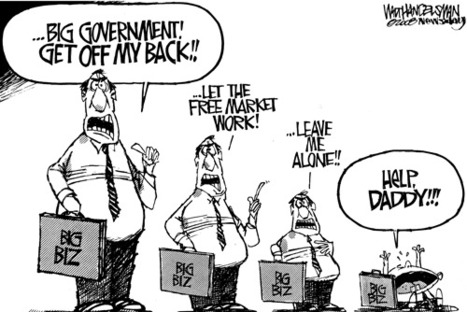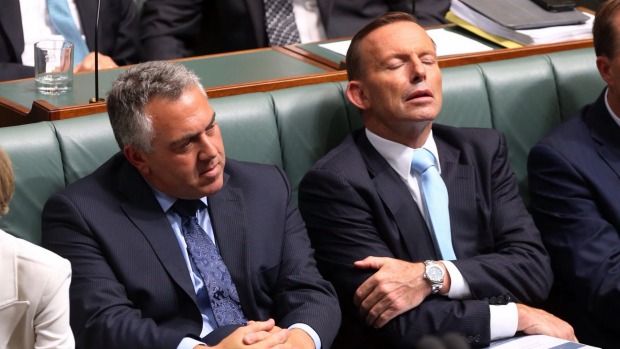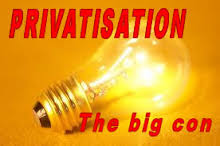I do not profess to being an investment whiz or understanding all the nuances of government finance, but I am good at managing a budget and I have a few queries about our current strategy.
Let’s start with the Future Fund.
The Future Fund was established by the Future Fund Act 2006 to assist future Australian governments meet the cost of public sector superannuation liabilities. Investment of the Future Fund is the responsibility of the Future Fund Board of Guardians with the support of the Future Fund Management Agency. The Board and Agency also invest the assets of the Building Australia Fund, the Education Investment Fund and the Health and Hospitals Fund which were established by the Nation-building Funds Act 2008.
The 2013 budget stated that:
“the portfolio of assets has performed well, given the extent of uncertainty and volatility in financial markets over the past five years. Since the effective start of the investment program on 1 July 2007, the Future Fund has generated a nominal return of 5.6 per cent. Since the first contribution to the Future Fund on 5 May 2006, the return has been 5.7 per cent per annum.
At 31 March 2013, the Future Fund’s return for the financial year to date was 10.6 per cent.”
A press release on 13 June 2014 further stated that:
“The Future Fund has generated a return of 7.0% per annum since its establishment, adding around $40 billion to the portfolio which now has a value of $100 billion.”
It is interesting to note that the underlying cash balance in the budget (ie the deficit) does not include net Future Fund earnings, so we are actually better off than they let on.
As at 31 March 2014, these funds contained:
$97.57 billion Future Fund assets
$3.87 billion Education Investment Fund assets
$4.09 billion Building Australia Fund assets
$2.47 billion Health and Hospitals Fund assets
The 2014 budget informed us that the Health and Hospitals Fund will be dismantled and replaced with a medical research fund paid for by GP co-payments and increased PBS co-payments.
Further, the Government has committed $5 billion to provide financial incentives over five years to the States and Territories to sell assets and reinvest the sale proceeds into additional productive infrastructure. The Asset Recycling Fund will be set up on 1 July 2014 to facilitate the Government’s investment in new infrastructure. It will include unspent funds from the Building Australia Fund and Education Investment Fund, and proceeds of the sale of Medibank Private and other possible privatisations.
“The Government has announced the sale of Medibank. It will continue selling assets where no compelling reason for government ownership exists with scoping studies to be undertaken into the ownership of Australian Hearing, Defence Housing Australia, the Australian Securities and Investment Commission Registry function and the Royal Australian Mint. The proceeds from future privatisations will be reinvested into the Asset Recycling Fund for new productive infrastructure.”
This money is being committed to an expansive road building program.
Projects getting the green light include:
• Fast-tracking $2 billion to accelerate stage two of Westconnex linking Sydney’s west and south-west with the CBD, Sydney Airport and Port Botany
• Roads for second Sydney airport, $3.5 billion
• Extra $1.5 billion on top of the existing $1.5 billion commitment for the East West link in Melbourne, with an anticipated 6000 jobs created.
• $944 million for Adelaide’s North-South corridor
• Perth – $1.6 billion freight-link package in partnership with the private sector
• Brisbane’s gateway motorway, no figures provided
• Northern Territory – Tiger Brennan Drive $70 million and $523 million in NT road improvement
• Tasmania – $400 million investment in the Midland Highway.
The splurge continues over the next decade to include duplicating the Pacific Highway between Newcastle and Queensland and an upgrade of the Port Botany Line in Sydney, but there are no figures.
A further $550 million is being committed for the Roads to Recovery and Black Spot Programmes, on top of the $2.5 billion previously committed.
Many of these projects are going ahead with dubious or no published cost benefit analyses, inadequate environmental impact and productivity surveys, and little consideration for the coming peak oil crisis. The business case for Westconnex, for example, states:
“While the prospect of peak oil is emerging, vehicle technologies are rapidly progressing with vehicles powered by alternative energy predicted to reach mass market production in the foreseeable future. While this may shift demand away from fossil fuels, it is unlikely that the demand for travel will reduce sufficiently as consumers adapt to alternatives and hence travel demand on our major road network is likely to remain.”
They give little evidence to back up this claim.
So this brings me to my question.
The current government bond rate is between 2.57 and 3.8% depending on the term (2 to 15 years). If the future fund has generated a return of 7.0% per annum since its establishment, and 10.6% in 2012, why aren’t we borrowing and investing more? Why are we taking money out of the Health, Education and Building Australia Funds, which are earning us a good return, and selling off profitable assets, to build roads? It seems to me that investing would bring us a greater return which could then be spent on the things we need.
If we are so worried about our interest payments, why not use some of the future fund to pay for guaranteed productivity enhancers like the NBN instead of borrowing the money?
And as far as future superannuation liability for public servants is concerned, this can be fairly accurately predicted and we can always issue more bonds should we need to.
Building roads may employ a few people in the short term, but if it is at the cost of investment in health, education, the environment, public transport, renewable energy, and the sale of assets, one has to question the advisability of such a move. Couple that with heavy expansion of coal mining and we could end up with a whole heap of roads to nowhere creating heat islands in the suburbs, and stranded assets as the world moves away from fossil fuels.
In June 2013, the Greens started a new campaign to push the Future Fund to stop investing in coal companies. Greens leader Christine Milne says up to $3 billion of the, at that time, $83 billion fund is invested in coal, which she describes as a “risky investment”.
In February last year, a Senate Committee was told that the Future Fund also had investment in cigarette and tobacco companies worth $221 million. Under pressure from the Greens and health groups, the fund decided to get rid of its investment in tobacco companies.
Joe Hockey was right when he told the Kiwis that our economy is in good shape and that we have no debt or deficit emergency, but it seems to me our investment strategy and asset management could do with a rethink. It’s our Future Fund and it should be used for our future.
Like what we do at The AIMN?
You’ll like it even more knowing that your donation will help us to keep up the good fight.
Chuck in a few bucks and see just how far it goes!
Your contribution to help with the running costs of this site will be gratefully accepted.
You can donate through PayPal or credit card via the button below, or donate via bank transfer: BSB: 062500; A/c no: 10495969



















